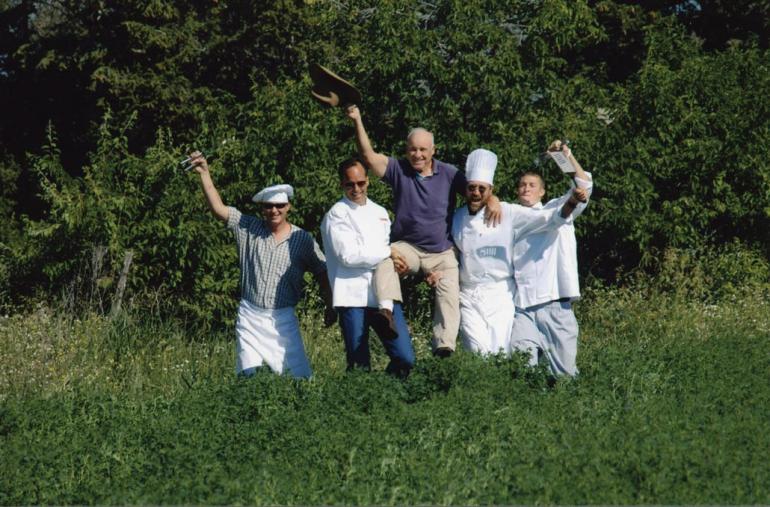If You Are What You Eat...
The lunch-hour rush didn’t keep John Bozeman’s Bistro executive chef Perry Wenzel from putting down the skillet to talk about his passion for cooking with Montana products. From wheat to whitefish, the Bistro, like several area restaurants, increasingly buys from local producers. Thanks to the Farm to Restaurant Campaign initiated last year by the Gallatin Valley Independent Business Alliance (GVIBA) and the Corporation for the Northern Rockies (CNR), the chance that the potatoes on your plate came from just beyond the subdivisions in Belgrade is becoming more and more likely.
“The Farm to Restaurant Campaign is getting bigger all the time,” says Wenzel. The first year of the campaign was extremely successful,” adds Bistro owner Ty Hill. In the first year, GVIBA and CNR linked 23 growers with 30 restaurants in the Gallatin Valley, Park County, and the Big Sky area. CNR and GVIBA seek out producers that take care of the land and use sustainable practices.
Suzie Johnson, president of GVIBA, spearheaded the Farm to Restaurant program after realizing that the organization had done little to promote family farms. “It slowly dawned on me that our farmers are small businesses,” she says. Drawing on inspiration from a farm-to-chef program in Santa Fe, Johnson approached the Livingston-based CNR to tap into its connections with producers. GVIBA brought its expertise in working with restaurants and a partnership was formed.
The Farm to Restaurant Campaign focuses on promoting local producers and the businesses that support them. “One hundred years ago, we all knew where our food came from,” says Johnson. Over time, the disconnect between the farm and the table has become immense. To put a face or a family on the food, Farm to Restaurant uses brochures, table toppers, menus, posters, and TV and radio ads. At the end of the campaign in October, CNR and GVIBA gather producers and chefs for a Harvest Celebration Dinner at Chico Hot Springs.
In addition to Farm to Restaurant’s promotional campaign, an educational component informs the public of the economic as well as social benefits of local foods. Many of the benefits of eating in a community’s “foodshed” go unrecognized by consumers. Consider that the average bite of food has traveled 1,500 miles. A recent Co-Op newsletter noted that the energy used to ship a head of lettuce from Salinas Valley, California to Washington D.C. is 36 times greater than the food energy the lettuce provides. Local foods cut down on energy consumption and carbon emissions–good things in a warming world.
According to CNR’s Brooke Cottongim, supporting local producers also enhances the economic multiplier effect. A dollar spent at a family farm or independent business circulates in the local economy instead of vanishing to far-off corporate headquarters. Local foods also enhance community by creating face-to-face interactions among consumers and the producers.
The Co-Op hopes to increase producer-consumer interactions by bringing producers into the store. Want to know how to grill that buffalo steak? There’s a good chance the rancher will be there to teach you. Joel Ellfeson, the recently hired Farm to Market Coordinator at the Co-Op, said that store will offer its largest selection of local produce ever this summer and that most products will be competitively priced. A star rating system for meat and produce will indicate whether it’s local.
Farm to Restaurant promotes what many consider to be common sense: local tastes better. As the Bistro’s Hill says, “The quality of Montana products is superb.”






